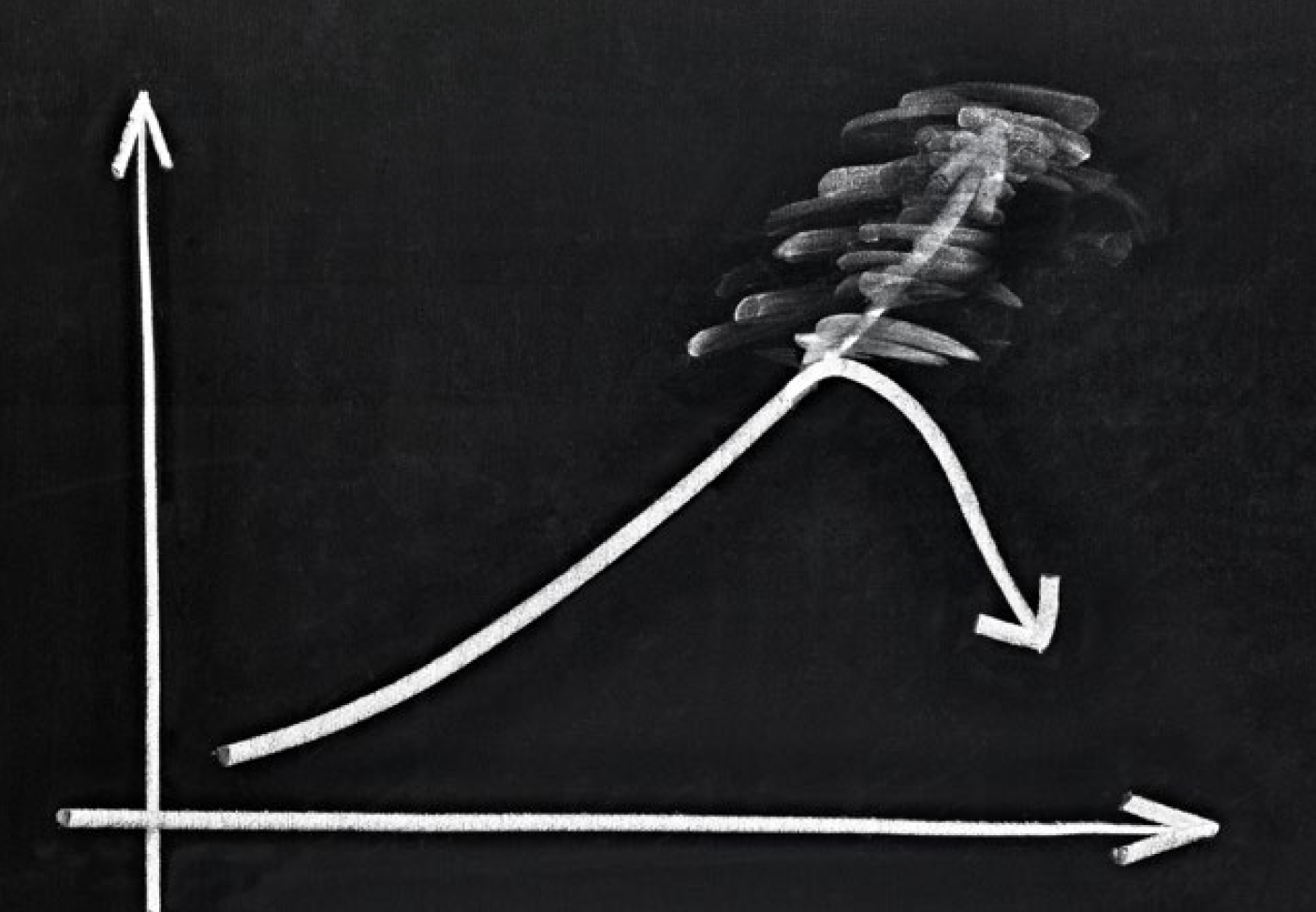as soon as 2020, the smart manufacturer will heed the advice and lessons learned from the last major recession in 2009-10. Even if that prediction is slightly off by a few months, the reality is that we haven’t had this type of economic growth lasting 10+ years for decades. Yes, the market is way overdue for a correction; the good times can’t last forever; and you need to prepare yourself and your Company for the realities of what marketing strategies you need to employ to successfully work through this possibility, and yes, THRIVE.
Just the FACTS:
In a recession, the first dollars that a company usually cuts come from the advertising budget. That’s a big mistake. Advertising in a recession is actually a smart business move to grow your business, both now, and for the future. It’s not the risk you may think it is. McGraw-Hill Research conducted a study of U.S. recessions from 1980-1985. Out of the 600 business-to-business companies analyzed, the ones who continued to advertise during the 1981-1982 recession hit a 256-percent growth by 1985 over their competitors that eliminated or decreased spending. American Business Press analyzed 143 companies during the economic downturn back in 1974 and 1975. Companies that advertised in those years saw the highest growth in sales and net income during the recession and the two years that followed.
The numbers aren’t a fluke. They prove there’s a reward for companies who are aggressive with their advertising efforts in a recession.

“American manufacturers are sliding deeper into recession. A closely watched gauge of factory activity released recently registered its weakest reading in more than 10 years, weighed down by slowing global growth, the Trump administration’s trade war with China and an ongoing strike by thousands of General Motors workers. The monthly survey by the Institute for Supply Management, an association of purchasing managers, showed that the sector — which accounts for roughly 12% of U.S. gross domestic product– in September shrank to its lowest level since June 2009. Manufacturers are also adding fewer jobs.” – Kate Gibson-Moneywatch
Recessions wreak havoc on unprepared or ill-equipped manufacturing businesses.
In the 2009-2010 recession more than 400,000 small businesses went bankrupt or permanently closed. If you want to prevent your business from suffering the same fate, you need to develop a recession marketing strategy now—not when the market drops, not when a recession is formally announced.
The short answer to the strategic steps needed to help you not only survive but thrive during a recession are time-tested and have held up through multiple past recessions include:
-
Don’t arbitrarily cut your marketing budget. Surgically review your current marketing strategies before making any knee-jerk cuts.
-
Analyze your target audience’s tolerance behavior in a recession mode and develop strategies to counter any negative repercussions
-
Use analytics in all your external communications and digital strategies to track trends so you can act accordingly to prevent sudden shifts by your customers.
-
Focus on existing customers and make sure you are aligned with their concerns and strategies during any downturns. You are in this together so be sensitive to their issues as well. Regardless of your industry, your brand’s biggest asset during a recession will be your existing customer base. These customers will repay you in the form of recommendations and reviews, especially if you can use analytics and data to show how you’re benefiting their company during rough times.
-
Develop metrics to help you improve your conversion rates by constantly engaging in A/B testing, tweaking, and repeating
Stepping Back:
When a recession hits, marketing is typically one of the first places manufacturers are tempted to cut. This is a critical management mistake that is well documented from previous recessions that slashing the marketing budget in a downturn will only help defend profits, but only in the very short term. The unfortunate reality is that the brand will emerge from the downturn weaker and much less profitable.
Building and maintaining a brand that customers recognize and trust is one of the best ways to reduce risk when the economy takes a turn for the worst.
That’s why, in each recession cycle, the companies with a strong brand presence have come out on top.

And, Consider This: Cutting the marketing budget during a recession is a gut reaction that is shared by both inexperienced and experienced Companies alike. So, that being said, another reality is if your competitors are cutting budgets, you’ll see an even greater long-term return on your marketing strategy if you stay the course. HOW you achieve that with limited budgets in an economic downturn is the key…. So, instead of making deep knee-jerk cuts, objectively look at where you’re allocating funds and what kind of return you’re getting on that strategic investment. The key word here is objectively because it’s not so much what level of spending you allocate but more critical is how you maximize using those funds, especially during a recession mode economy.
The success of your recession marketing strategy will hinge on knowing your customers/prospects and how they react in a recession environment.
I came across a perfect example of this strategy in an article I was researching and while it has to do with a retail environment, the thought process and strategic mis-step applies easily to the manufacturing segment as well. To paraphrase the context…
A Midwest business owner in the luxury automobile industry thought he had marketing down to a science during a recession because his business grew when the dot-com bubble burst. He had an MBA from a top-tier school and watched the market like a hawk.
When the sub-prime mortgage crisis grew, he wasn’t worried. He thought he knew his customers and the modern buyer’s journey. He assumed that when the next recession hit, his customers would skip the high-luxury lines and go for more midgrade luxury vehicles as they did in the previous downturn. So, he stocked up on lower-priced luxury cars and tailored his marketing strategy to convey frugality.
Big mistake.
He failed to do a deep-dive of his current target audience and how they behaved during a recession. If he had, he would have learned that his target audience wouldn’t necessarily curb their automobile spending habits and would continue to buy high-end cars foregoing other luxury items instead. The new cars he’d stocked up on alienated his existing wealthy customer base but were still too expensive for the remainder of the local population. His existing clients started shopping at competing dealerships and his business took a huge revenue hit that he would spend the next four years trying to get his business back on track.
This model by Harvard Business Review also has relevance in the manufacturing community.
Think of your customers as falling into four groups (again paraphrased to have relevance to this article):
Slam-on-the-Brakes Customers:
Feels most vulnerable and hardest hit financially. This group reduces all types of spending by eliminating, postponing, decreasing, or substituting purchases. Although lower-level manufacturers typically fall into this segment, anxious higher-end customers can as well.
Pained-But-Patient Customers:
Tend to be resilient and optimistic about the long term but less confident about the prospects for recovery in the near term. Like slam-on-thebrakes customers, they economize in all areas, though less aggressively. They constitute the largest segment and include the great majority of manufacturers relatively unscathed by economic downturns, but still very cautious.
Comfortably Well-Off Customers:
Feel secure about their ability to ride out current and future bumps in the economy. They place orders at near pre-recession levels, though now they tend to be a little more selective about their purchases. The segment consists primarily of recession-proof manufacturers whose products will always be needed.
Live-for-Today Customers:
Carries on as usual and for the most part remains unconcerned about savings or a recession mode. The customers in this group respond to the recession mainly by extending their timetables for making major purchases or any capital expenses related to expansion etc… Typically well established in recession-resistant products, they are more likely to spend on capital equipment and products that will allow them to gain market share where they feel there competitors are in a pullback mode.
Remember the automobile dealership owner? It turned out that his target audience was comprised of consumers in the “comfortably-well-off” and “live-fortoday” categories who saw luxury cars as Treats (and to an extent, Postponables).
Taking it a step further, he reached out to his most loyal customers and interviewed them to find out their specific motives and plans for spending in the next recession. He’s tailored his recession marketing strategy to offer loyalty rewards and more referral bonuses and started an email marketing newsletter to stay in constant communication.
- Don’t dilute your positioning… stay focused
- Place emphasis on existing clients first… expansion will come
- Plan for a longer sales cycle…assume every client will have similar belttightening initiatives
- Start measuring your marketing efforts… there are metrics abound, especially in a digital world, to guage success and adjust accordingly
So, where do you go from here?
Recession Marketing is a science onto itself. The goal to a successful marketing strategy lies in the ability to understand the psychology and emotion of your target market. A recession is a trying time for most manufacturers, and there’s an undercurrent of fear, worry, and stress beneath the surface, especially for the top management team and all their employees. By tapping into and appealing to the emotional side of your customers you have a better chance of connecting with and persuading them, especially during any significant downturn in the economy.
During a recession, knowing exactly what return each marketing investment is providing will be your key to not just survival, but growth.
Digital marketing has long been accepted as the best low-cost, high-return marketing strategy, largely due to measurability and targeting capabilities. Digital marketing allows for more precise, specific, and measurable campaigns. This leads to better, more quantifiable results than traditional advertising campaigns—and it all starts with the right tracking and analytics. Research shows that marketing campaigns that focus on emotional engagement tend to be more reliable than ad campaigns that focus on rational messages (such as lower prices or special incentives). That said, a thorough deep-dive into your manufacturing capabilities coupled with a clear understanding of your target markets (and the customer profiles in each of those markets), especially during a recession mode, will help you rise to the top where others fall to the wayside because they panicked and did everything counter to research on how to survive a recession.
